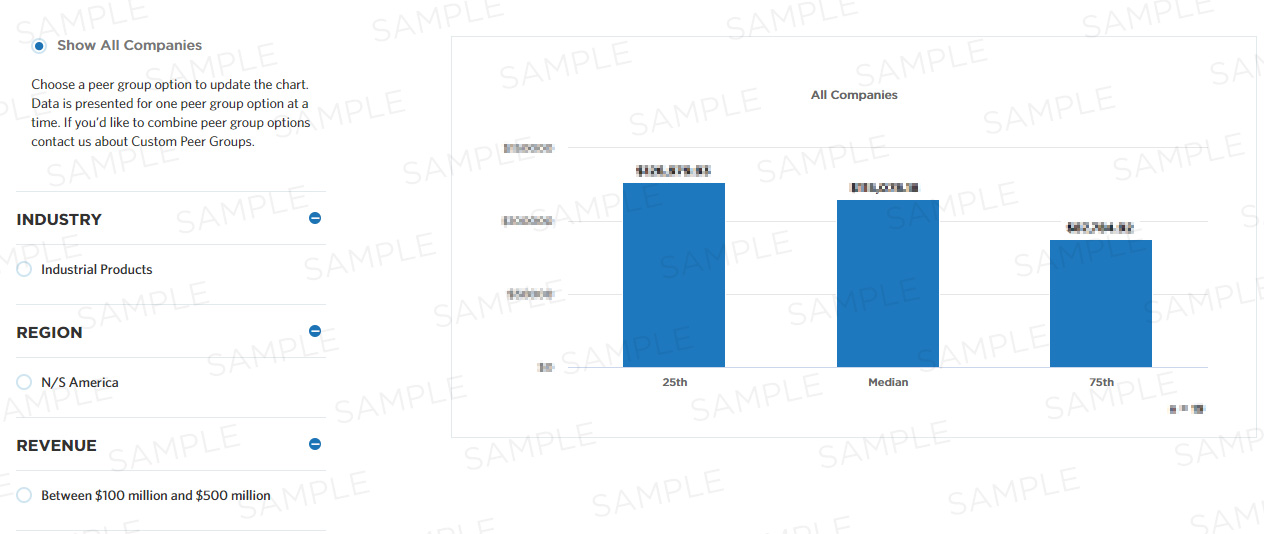Number of FTEs that perform the process "develop and train employees" per $1 billion revenue
This measure calculates number of full time equivalents (FTEs) that perform the process "develop and train employees" per $1 billion revenue of business entity. The Process "develop and train employees" includes [Creating a link between employee and organizational development needs. Conduct and manage employee training programs by considering the need and availability of these programs. ]. This Process Efficiency measure is intended to help companies minimize waste and refine resource consumption related to the process "Develop and train employees".
Benchmark Data
| 25th | Median | 75th |
|---|---|---|
| - | - | - |

Compute this Measure
Units for this measure are FTEs.
Number of FTEs that perform the process "develop and train employees" / (Total business entity revenue * 0.000000001)
Key Terms
Total Annual Revenue/Net Revenue
Total annual revenue is net proceeds generated from the sale of products or services. This should reflect the selling price less any allowances such as quantity, discounts, rebates and returns. If your business entity is a support unit and therefore does not directly generate revenue, then provide the revenue amount for the units you support. For government/non-profit organizations, please use your non-pass-through budget. For insurance companies the total annual revenue is the total amount of direct written premiums, excluding net investment income. Note: Business entity revenue needs to only include inter-company business segment revenue when the transactions between those business segments are intended to reflect an arm's length transfer price and would therefore meet the regulatory requirements for external revenue reporting.
FTE - (full-time equivalent employee)
To calculate the number of full-time equivalents employed during the year for each respective process or activity, you must prorate the number of employees and the hours spent performing each process/activity. Assume that a full-time worker represents 40 hours per week. Provide the average number of full-time equivalents employed during the year for each respective process. Include full-time employees, part-time employees, and temporary workers hired during peak demand periods. Allocate only the portion of the employee's time that relates to or supports the activities identified for an applicable process. Prorate management and secretarial time by estimating the level of effort in support of each activity, by process.
For example, a part-time secretary in the finance department for XYZ, Inc. charges all of his time to finance department activities. He works 20 hours per week. The secretary splits his time evenly supporting employees working in the general accounting process and the financial reporting process. Thus, his time should be allocated by process. So, if he works throughout the year and supports these two processes, his time would be split evenly as:
20hrs/40hrs = .5FTE * 50% for general accounting = .25FTE for general accounting
20hrs/40hrs = .5FTE * 50% for financial reporting = .25FTE for financial reporting
Process efficiency
Process efficiency represents how well a process converts its inputs into outputs. A process that converts 100% of the inputs into outputs without waste is more efficient than one that converts a similar amount of inputs into fewer outputs.
Median
The metric value which represents the 50th percentile of a peer group. This could also be communicated as the metric value where half of the peer group sample shows lower performance than the expressed metric value or half of the peer group sample shows higher performance than the expressed metric value.
Full-time Employee, Part-time Employee, and Temporary Employee
Full-time Employee
For the purpose of this survey, a regular full-time employee is hired for an indefinite period of time and is normally scheduled to work forty hours per week. Appointment is continuous, subject to satisfactory performance and availability of funding.
Part-time Employee
For the purpose of this survey, a regular part-time employee is hired for an indefinite period of time and is scheduled to work less than forty hours per week.
Temporary Employee
A temporary employee is employed for a finite period of time, to fulfill a time-limited role, or to fill the role of a permanent employee who is absent from work. The length of time an employee can work for the organization and be considered a temporary employee may be governed by employment legislation.